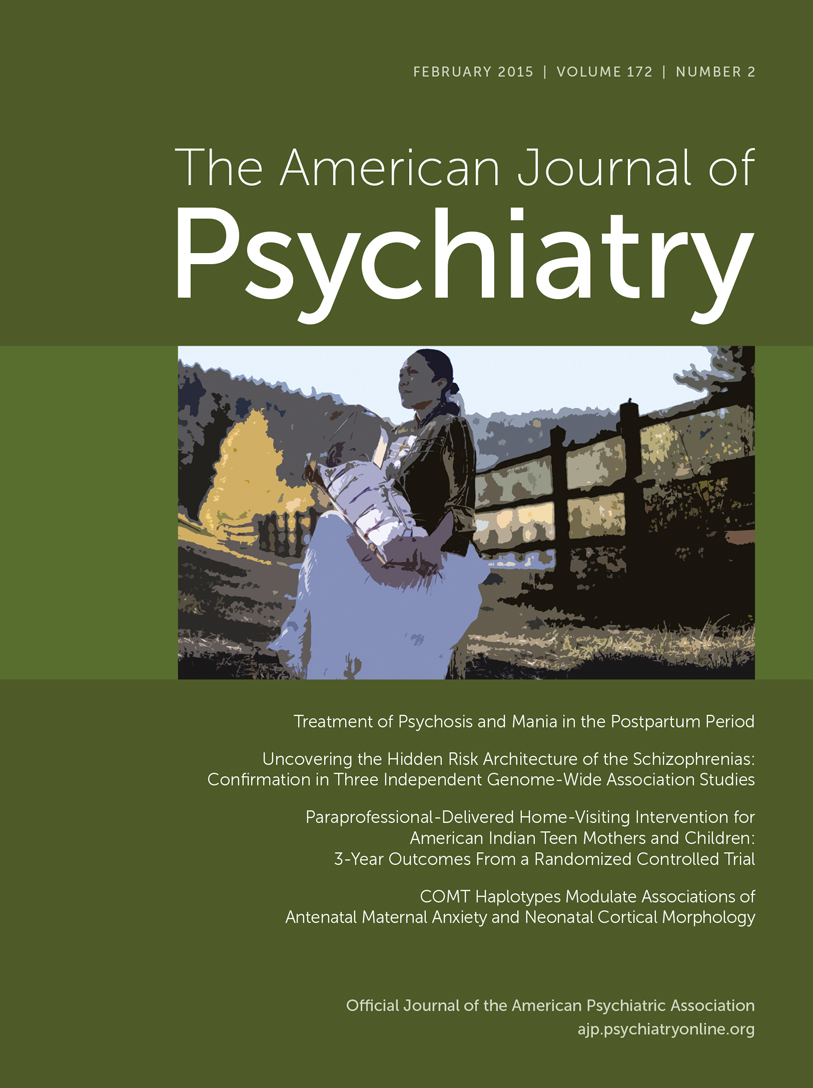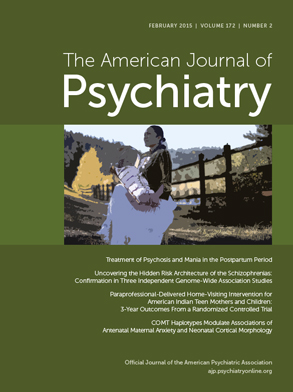The Affordable Care Act (ACA) includes a number of provisions aimed at expanding health insurance coverage in the United States. Most attention has focused on the Medicaid eligibility expansions and the creation of state-based health insurance exchanges with subsidies to help individuals with lower incomes purchase policies. However, the ACA’s requirement that insurers allow young adults ages 19–25 to remain enrolled as dependents on their parents’ insurance policies is a key component of the law’s efforts to expand coverage and has the potential to be a particularly important means of improving access to mental health services.
Effective September 23, 2010, the dependent coverage provision offered a way for the federal government to extend coverage to an estimated 3 million young adults as of 2011 (
1), 3 years before the other coverage provisions were implemented and at no cost to the federal government. Advocates hoped that the dependent coverage provision would expand access to health care, including mental health services, to a population with the highest rate of uninsurance of any age group—31.4%, or nearly double the national uninsured rate in 2009 (
2). Young adults have a high rate of mental health service needs because of the onset age of many psychiatric disorders (
3), but they have been much less likely than older individuals to access mental health services. In 2008, the rate of service use among individuals with serious mental illness was 40.4% for individuals ages 18–25, as compared with 62.2% for those ages 26–49 and 70.9% for those 50 and older (
4). While lack of insurance coverage is not the only potential barrier to receipt of psychiatric treatment by young adults, it is clearly an important one. The dependent coverage provision will not ensure insurance coverage for mental health services for all uninsured young adults, however. Young adults must have a parent with private insurance that covers mental health services in order to gain insurance for these services through this option. Also, if the parents’ plan includes a limited network of local providers and no out-of-network coverage, young adults who live far away from their parents may have difficulty gaining access to covered services.
The study by Golberstein et al. in this issue (
5) addresses the question of whether the ACA dependent coverage provision has resulted in increased use of mental health services for young adults. The authors use a difference-in-differences design to examine the effect of the policy change on rates of inpatient and emergency department use for psychiatric diagnoses, comparing the impact of the policy change on young adults eligible for the policy (those ages 19–25) and young adults who are slightly older (ages 26–29) and thus not affected by the policy. By comparing utilization before and after the change for an intervention and comparison group, the difference-in-differences design allows the authors to isolate the change’s impact, accounting for secular trends in service use for this age group.
Using national data on inpatient psychiatric admissions to nonspecialty mental health facilities (i.e., facilities that provide a broad range of services including mental health services, as opposed to those specializing in mental health treatment) from the National Inpatient Samples data and California state data on emergency department visits for the period 2005–2011, Golberstein et al. report that primary diagnoses of psychiatric disorders account for a sizable proportion of inpatient and emergency department use in this age group—approximately 16% of non-childbirth-related inpatient admissions to nonspecialty facilities nationally, and 14% of emergency department visits in California. Notably, they find that national rates of psychiatric inpatient admissions to nonspecialty facilities increased by 0.14 per 1,000 for young adults ages 19–25 relative to those for young adults ages 26–29. While analysis of nonspecialty admissions ignores the 42% of mental health inpatient spending that occurs in specialty facilities (
6), a sensitivity analysis using California data on inpatient admissions to both specialty and nonspecialty facilities produced similar results overall. In contrast, rates of psychiatric emergency department visits in California decreased 0.45 per 1,000 for the 19–25 age group relative to 26–29 age group after the policy was implemented. The probability that psychiatric inpatient admissions and emergency department visits were uninsured declined, a change that suggests increased financial protection for young adult users of these services.
These findings on mental health service utilization are consistent with recent research documenting the policy’s impact on overall (not mental health specific) use, including reduced inpatient admissions, decreased nondiscretionary emergency department visit use, decreased rates of uninsured service use, and reduced out-of-pocket expenditures, among young adults (
7–
9). The results of the Golberstein et al. study are also consistent with research by Saloner and Lê Cook (
10), who documented increases in psychiatric treatment among young adults with serious psychological distress after the provision’s implementation.
The combination of decreased psychiatric emergency department use and increased psychiatric inpatient admissions would clearly point to increased access to care attributable to the policy change if accompanied by increases in outpatient mental health service use. Because of a lack of data, Golberstein et al. were unable to examine the impact of the provision on outpatient use. While it seems logical that a decrease in emergency department use and an increase in inpatient admissions would be accompanied by an increase in outpatient use, a study of the impact on outpatient use is needed to confirm that young adults with mental health service needs have improved access to such services in community-based settings.
Golberstein et al. raise several other important questions for future research. Their study is intended to present results on initial implementation of the dependent coverage provision, using data through 2011. These early data do not allow an assessment of long-term insurance status for young adults who initially gain coverage through this provision. What happens when young adults age out of the dependent coverage provision? What type of coverage do they obtain, if any? Also, was there any change in take-up rates for dependent coverage once Medicaid expansions and exchange policies with subsidies became available in 2014?
The most important question, however, is whether this new source of insurance coverage improves outcomes for young adults with psychiatric disorders. There is evidence suggesting that early intervention can improve outcomes and quality of life for individuals who develop severe psychiatric conditions (for example, early onset of psychosis) (
11,
12). The dependent care provision may be one way to help remove financial barriers to use of such services. This provision may be especially important in the 23 states that have not expanded Medicaid, where exchange policies, which sometimes have relatively limited coverage or restricted provider networks, are the only other new option for young adults.
In combination with the Mental Health Parity and Addiction Equity Act, which requires parity in coverage for psychiatric services and general medical services for plans that offer mental health benefits, the ACA represents the largest expansion of mental health coverage in U.S. history. The extent to which these changes translate into improved access to psychiatric treatment and enhanced quality of care remains to be seen. The Golberstein et al. study is an important early step in understanding the impact of these changes for young adults with mental health service needs.

